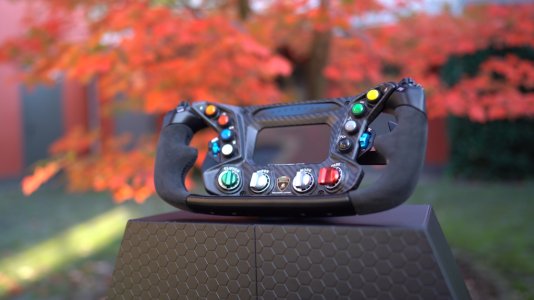I think the point I am trying to make is that it is not clear that dbox has the ability to use solely haptic vibration. That is because micro-movements are part of the experience and seem to be integrated throughout. For example the suspension (road texture) option in most games.
This is where there is a potential impact to experience based on use of vibration isolation components in the rig. For main movements, you can always just make them more intense (in dbox terms) to compensate for dampening. I am not sure that such a compensation scheme (which is effectively a sledge hammer approach) works for micro movements and actuator based haptics given the extreme amount of subtlety and nuance they generate.
I don’t have isolation components on my rig so I won’t be able to test. What I can share is that similar to RCHeli’s experience, the more solid the rig end-to-end, the better the experience has been. Let’s see what he says

I have said this before, either you are interested in expanding your tactile immersion or you are not. Yet you seem to have convinced yourself that DBox haptics and an added unit for "Audio Tactile" is good enough for you so it should be good enough for others.
Relying on that, then, you are not close to the potential we can achieve from effects design. How or where these effects are output and placed into our bodies, using a tried and tested combination of hardware. Such hardware installed more directly to the user's body, can deliver not only, much more advanced effects than what motion haptics offers but produce increased dynamic range and much greater clarity from overtones applied in effects.
This is why you see already in a short space of time, lots of DBox or other motion owners moving towards the pioneering work myself or others are trying to do with advanced tactile.
Let me point out something.
A TST unit as an example can output all its energy over a single bolt. While it also supports an attachment. This can be the minimum contact surface area with whatever it's attached to.
My point intended here is, that even a single bolt for contact is enough for vibrations to travel sufficiently.
The RB isolators are designed so that the dual neoprene isolators and spring will have a reduction in what vibrations pass through. It won't fully prevent them from passing.
The bolt they use is "
tactile live" with the attached surfaces it is bolted to so any vibrations, should still travel directly via this bolt.
The springs are stiff and the user can adjust the compression to their preference/weight of seat/user combination.
To further compound this point regards just a bolt as the contact point for vibrations to travel. Regardless of the tactile being used as an example, many users with tub-based race seats.
The contact points for their seat to the rig and for all vibrations felt in their seat is also only via 4 bolts attaching the seat to the seat risers/supports.
So I would expect DBox haptics to still travel through the RB isolator bolts pretty well as intended. How much it restricts it, I can't say but I never heard of any specific performance concerns as issues from motion owners. Nor have I heard of people talking about the loss of micro-movements or their importance that you highlight.
I think most users who spend the money on DBox and apply isolation like an RB concept for additional tactile that Mark now has installed.
In adding such, we would assume they are interested in going with advanced tactile. Simply because they want the best options for tactile, to further their immersion and enjoyment and rely less on the motion haptics. This way to achieve a much better
combination of pro-quality motion and pro-quality tactile.










